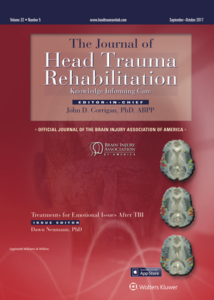Background: It is estimated that 45 million persons between the ages of 5 and 19 years participate in some form of athletic activity. It is further estimated that 5% to 10% of sports participants in this age range will suffer a sports-related concussion, leading to an emergency department visit. Presumptively, a significant number of injured youth do not go to emergency rooms and deal with their symptoms at home. Due to the dramatic increase in awareness and concern regarding sports concussions among athletes of all ages, there has been a need for more valid and reliable methods for determining whether a concussion has occurred and, if so, how long the effects persist. Traditionally, concussions were evaluated “clinically,” that is, by observation and interview of the concussed individual by witnesses and/or athletic trainers. Except in cases involving prolonged periods of unconsciousness, physicians were rarely involved. Formal evaluations by neuropsychologists were generally limited to these more severe cases, and rarely addressed the issue of a mild concussion with minimal or no loss of consciousness. As our understanding of concussions evolved, due in part to the introduction of advanced neuroimaging techniques, it became clear that many individuals who had suffered apparently minor head blows had in fact experienced subtle changes in brain functionality that provided a physiological basis for many of their immediate and short-term postconcussive signs and symptoms. The need for a more efficient way of detecting and tracking concussions over time was obvious, and not surprisingly a number of developers have introduced devices or computer software designed to address these key issues. The present article describes some of the principal providers of concussion detection and tracking technology available without attempting to critique or recommend one system over another. Suffice it to say, every attempt has been made to select methodologies, which either have a “track record” in the field or show promise for becoming more prominent due to innovative approaches and data gathering.
King-Devick Test in association with Mayo Clinic:
- The King-Devick Test (K-DT) was one of the first concussion assessment systems to focus primarily upon eye movements to diagnose and track sports-related concussions. It was initially developed by optometrists Alan King and Stephen Devick as a diagnostic tool for identifying reading difficulties. Subsequently, the methodology was applied to identifying concussions and has resulted in promising research. The task presented in the King-Devick Test in Association with Mayo Clinic (K-DT MC) is relatively simple: the examinee is asked to read individual letters displayed either on paper or on a handheld tablet. The examinee is instructed to proceed as rapidly as possible, to avoid errors (commission or omission), and to refrain from touching the screen. The K-DT MC does not employ norms in the traditional sense of that term. A subject’s performance is compared with his or her previously established baseline. Baseline performance is defined as the faster of 2 error-free administrations. The examiner records errors (including self-corrections) and time to complete each task. If the test is administered using a tablet (iPad or Android) and there is a Wi-Fi connection, results can be recorded and transmitted to a designated location. Failure on a postinjury administration is defined as an increase in the time score or number of errors will result in a “worse than baseline” performance. The computer system does make this determination but only states that the performance difference either was or was not within expected parameters. If the subject performs faster than baseline, then this latest performance becomes the new baseline. One of the advantages of the system is its simplicity and portability.

